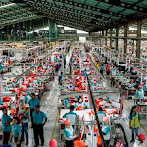{Wardrobe Essentials}
Every man should have a core collection of timeless clothing pieces. These serve as the foundation of your wardrobe and can be dressed up or down depending on the occasion.
Tops
- White Oxford Shirt: A crisp, button-down shirt that works in business casual or smart casual settings.
- Plain T-shirts: High-quality cotton t-shirts in neutral colors (white, black, navy, grey) for layering or casual outfits.
- Polo Shirts: A nice middle ground between a T-shirt and a dress shirt.
- Sweaters and Crewnecks: Wool or cotton knitwear is great for layering and adds sophistication.
- Henley Shirts: Casual but stylish, perfect for relaxed weekends.
Bottoms
- Dark Wash Jeans: Slim or straight fit works well in most settings.
- Chinos: In beige, navy, or olive—these can be dressed up or down.
- Tailored Trousers: Essential for formal or business wear.
- Shorts: Fitted, above-the-knee shorts for summer or casual days.
Outerwear
- Denim Jacket: A classic casual layer.
- Bomber or Harrington Jacket: Sleek and versatile.
- Blazer or Sport Coat: Essential for smart casual to business settings.
- Overcoat or Trench Coat: A stylish necessity for colder weather.
- Leather Jacket: Timeless, adds edge to your look.










